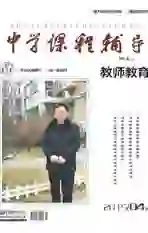The Negative Transfer of Shaanxi Dialect on the Acquisition of English Sounds
2015-06-02刘颖
刘颖
摘 要:This article mainly studies the negative transfer of some pronunciations of Shaanxi dialect in second language acquisition. The author attempts to give some suggestions to help leaner who speaks Shaanxi dialect to master the English pronunciation.
关键词: second language acquisition; Shaanxi dialect; negative transfer
中图分类号:G642.3 文献标识码: A 文章编号:1992-7711(2015)04-09-01
Introduction
The author finds many students make problematic sounds because of the negative transfer of Shaanxi dialect. So in this article, the author takes some common problematic sounds for example, analyzes their reasons and tries to finds some ways to help students to master the English pronunciation.
1.The role of the first language in second language acquisition
Second language acquisition(SLA) is strongly influenced by the learners first language(L1). The role of the L1 in SLA includes two aspects: negative transfer and positive transfer. If the L1 and L2 were similar, the L1 would aid or facilitate L2 learning. This is called ‘positive transfer. Whereas the L1 gets in the way or interferes with the learning of the L2, such as the features of the L1 are transferred into the L2. This is called ‘negative transfer.
2. The negative transfer of Shaanxi dialect and its reasons
Shaanxi dialect is made up of 3 parts, northern Shaanxi dialect, guanzhong dialect and southern Shaanxi dialect. It succeeds the characteristic of Chinese sound but has its own specificity. So it has different influence on English sounds learning.
Firstly, students always try to make sounds by their accustomed articulated patterns. For example, there are no dentals /θ/ and in Shaanxi dialect. So they use the similar ones /s/ and /z/ to replace. Thus we can find students pronounce thank as , they
as /zei/.
Secondly, students often add some phones. Shaanxi students usually add / / or /u/ on stops /p/, / b/, /t/, /d/, /k/, /g/. For example, they speak “right” and “should” as /rait /and /■ud /instead of /rait/and /■ ud/.
Finally, in some places of Guanzhong area, some people cant distinguish /u/ and / u/. They read “读” /du/ as /dou/, “路”/lu/ as /lou/. So students pronounce book /buk/ as/b uk/, good /ɡud/ as /ɡ ud/. Another situation happens in the north of Shaanxi, students cannot make the difference between /n/ and / / because of their strong nasals. Thus, they speak in/in/ as /i /, lend/ lend/ as /le d/.
3. The way of solving
Shaanxi dialect has big negative transfer to English sounds which cause a lot of confusion. Therefore, it is necessary to take some treasures to weaken or get rid of negative transfer in SLA.
3.1 To learn the right sounds
On the one hand, the teachers should have good pronunciation. Only if the teachers pronounce correctly will the students learn it correctly. On the other hand, students should try their best to learn right pronunciation.
3.2 To master the differences between their dialect and English phonemes
Students should analyze the differences between their dialect and English phonemes. For example, if students know /n/ is a front nasal and an alveolar, while / / is a velar and a back nasal, they will make no mistakes when they pronounce.
3.3 To learn the knowledge about articulatory phonetics
Students should master the knowledge about articulatory phonetics, such as, place of articulation, manner of articulation. For example, /θ/ and /e/ are dentals and fricatives. Whereas /s/ and /z/ alveolar and fricatives. The former are formed with the tongue tip behind the upper front teeth, and the latter is uttered with the front part of the tongue on the alveolar ridge, which is the rough, bony ridge immediately behind the upper teeth.
3.4 Practice more, never mind of making mistakes
Students should be encouraged to practice more. Only they speak more can they or others find their mistakes.
4. Conclusion
Shaanxi dialect makes great negative transfer in second language acquisition. This article simply takes some common problematic sounds for example, analyzes their reasons and gives some suggestion, hoping they can have less negative in their future communication. However there are still some shortcomings in the article because of the authors shortage of knowledge. The author will go on studying in the future work.
[References]
[1] Brown, H.D. Principles of Language Learning and Teaching (third
edition)[M]. Foreign Language Teaching and Research Press,2001.
[2] George Yule. The Study of Language [M]. Foreign Language
Teaching and Research Press and Cambridge University Press,
2000
[3] Rod Ellis. Understanding Second Language Acquisition [M].
Shanghai: Shanghai foreign language education press, 2013
[4] 任素真. 陕西方言发音对英语的影响分析[J].西安:陕西教育·
高教,2011(04).
[5] 雷晓亮. 湘方言对英语发音的负迁移影响及对策[J]. 英语广
场·学术研究,2011(03)
